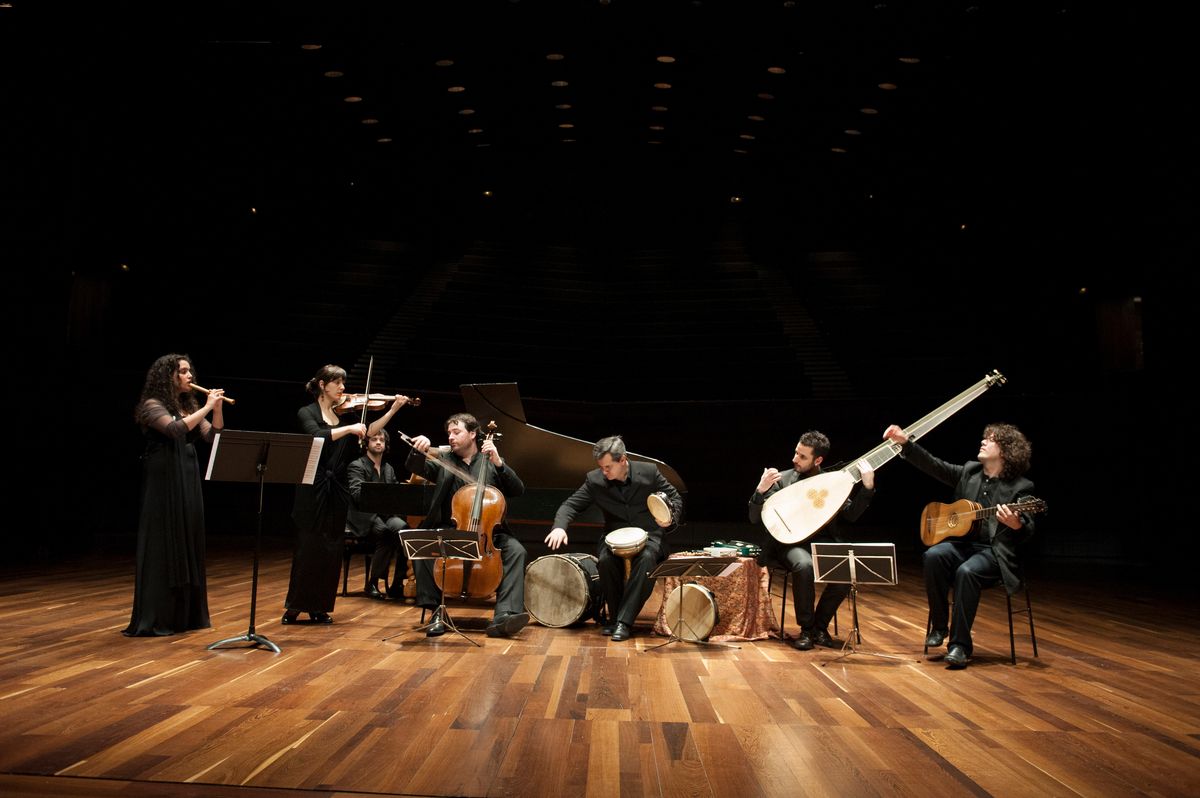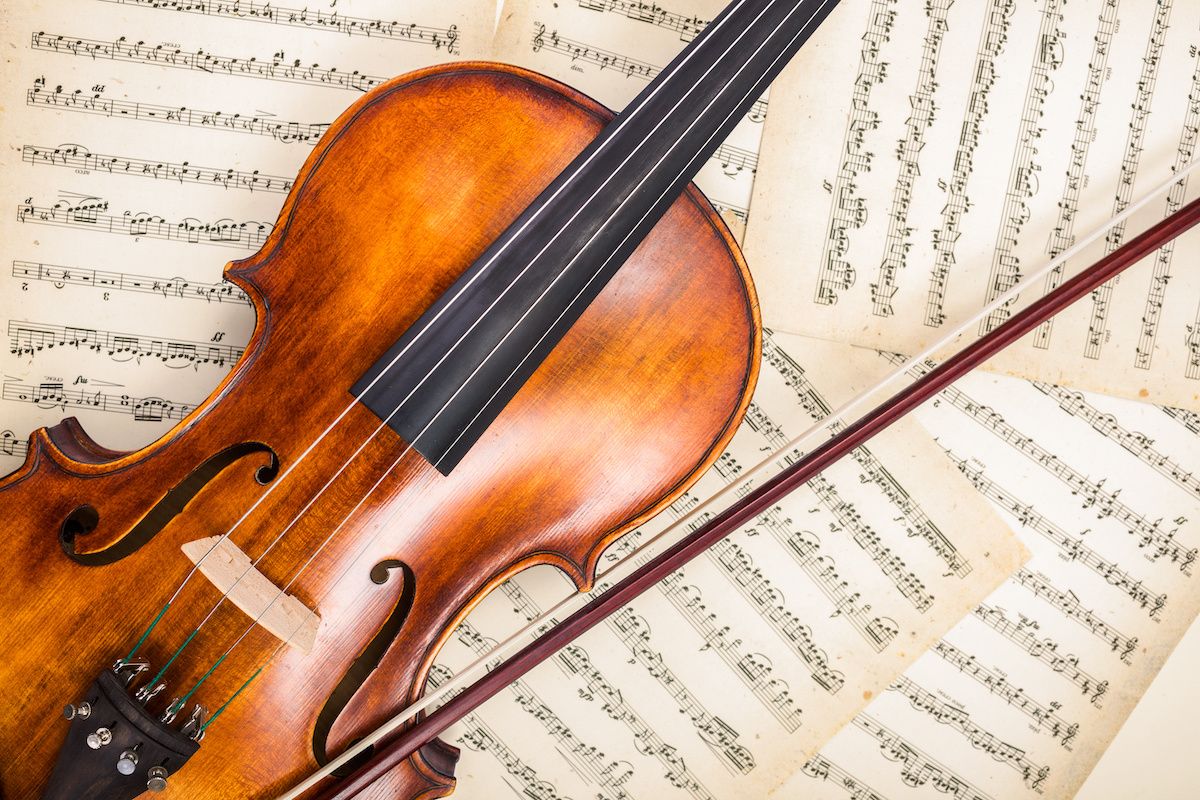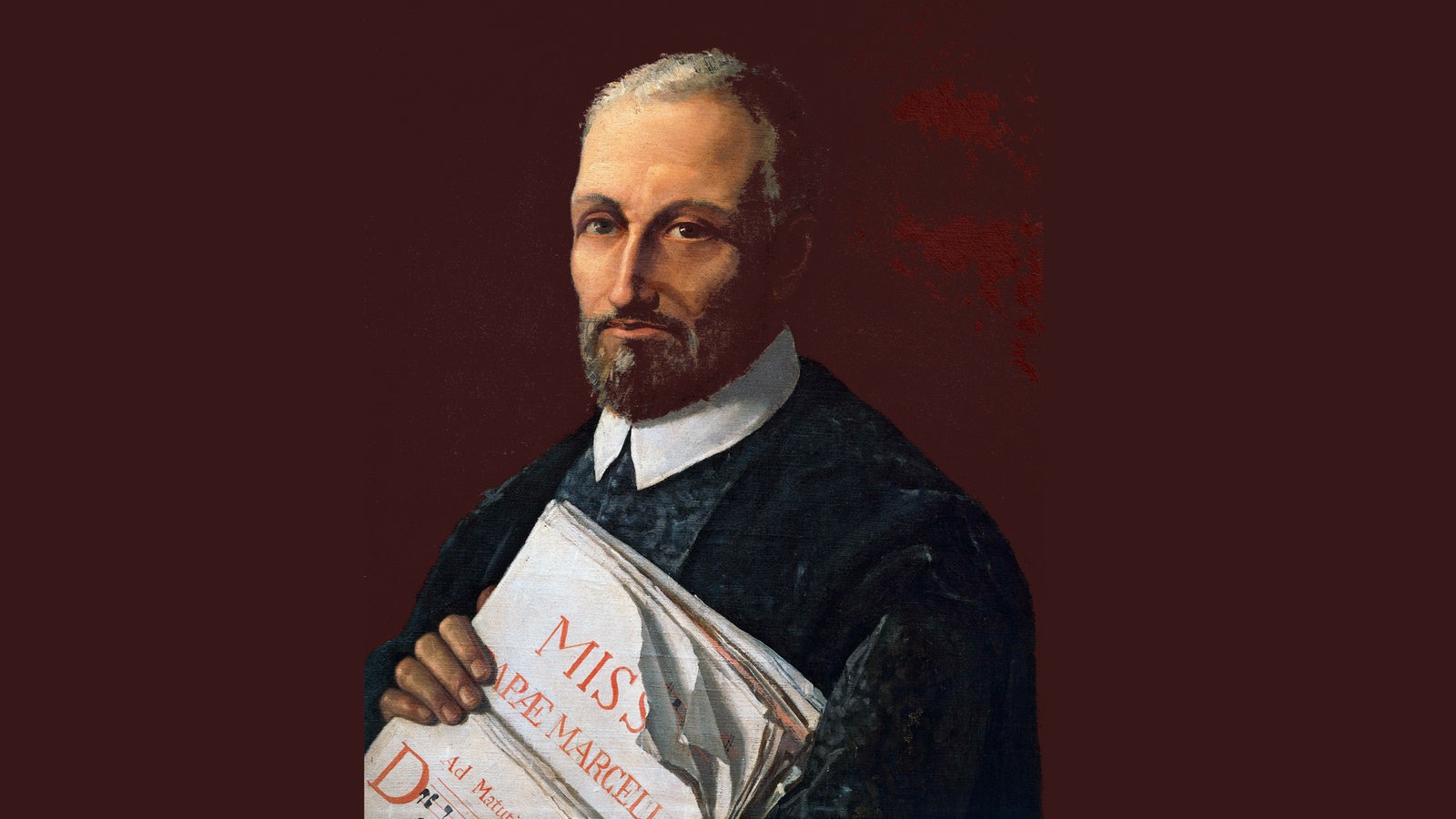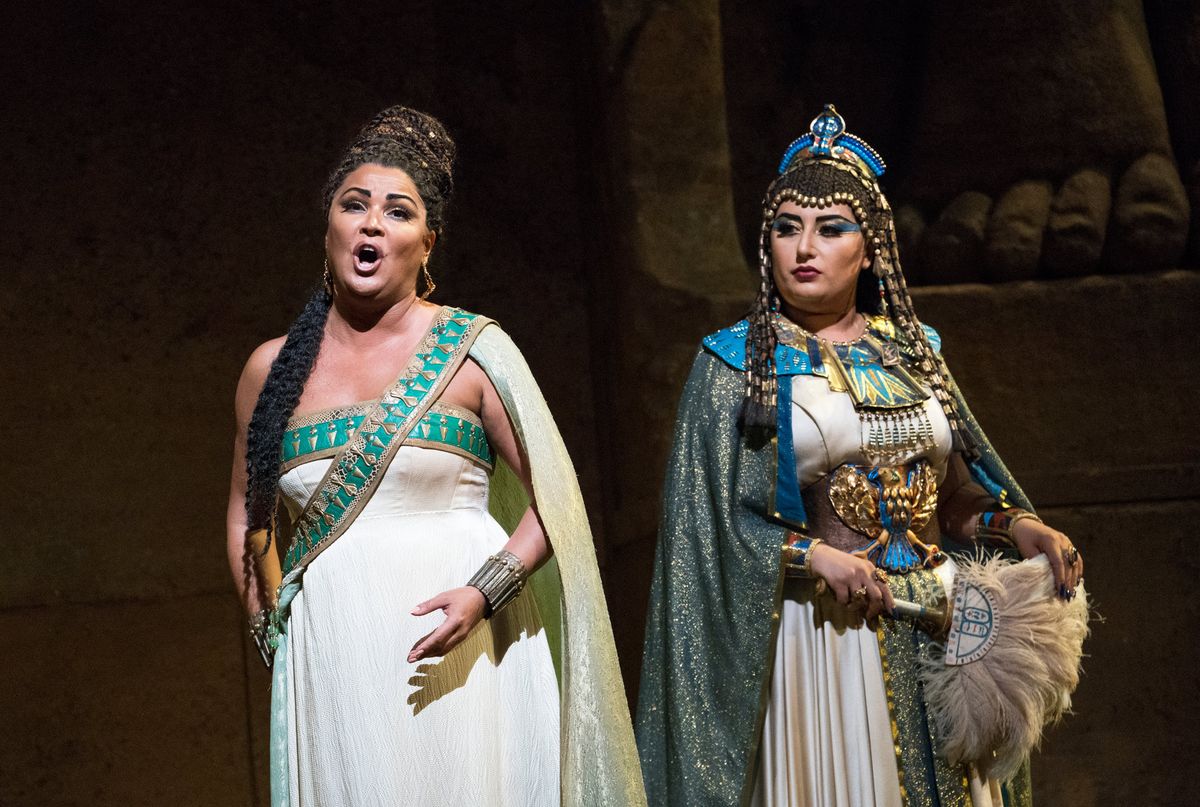Home>Genres>Classical>What Was Important About Vienna During The Classical Period?


Classical
What Was Important About Vienna During The Classical Period?
Modified: February 24, 2024
Discover the significance of Vienna during the Classical period, as it became a vibrant hub of musical excellence and the birthplace of legendary composers. Immerse yourself in the rich heritage of classical music.
(Many of the links in this article redirect to a specific reviewed product. Your purchase of these products through affiliate links helps to generate commission for AudioLover.com, at no extra cost. Learn more)
Table of Contents
- Introduction
- Rise of Classical Music in Vienna
- Influence of Haydn
- Mozart and his Impact on Vienna
- Beethoven and the Transformation of Classical Music in Vienna
- Musical Institutions and Concerts in Vienna
- Vienna as a Center for Musical Education
- Vienna’s Contribution to Music Theory and Composition
- Legacy of Vienna’s Classical Period
- Conclusion
Introduction
During the Classical Period, which spanned roughly from the mid-18th century to the early 19th century, Vienna emerged as a musical hub that produced some of the most influential composers and compositions in history. This era in music is characterized by its emphasis on balance, clarity, and structure, with composers exploring new forms and styles.
Vienna’s significance during this period cannot be overstated. It was not only the cultural and political capital of the Habsburg Empire but also a fertile ground for artistic expression and innovation. The city attracted musical talent from all over Europe, serving as a melting pot of ideas and influences.
Vienna’s rise as a center of classical music can be attributed to several key factors. First and foremost, it had a thriving and affluent middle class who had a strong appreciation for the arts. This created a demand for musical performances, leading to the establishment of numerous concert venues and musical institutions.
Secondly, Vienna was home to a number of aristocratic patrons who provided financial support to composers and musicians. These patrons, including the Habsburg imperial family, recognized the importance of music as a symbol of status and cultural sophistication. Their patronage allowed composers to focus on their craft and pushed the boundaries of musical innovation.
Lastly, Vienna’s geographical location at the crossroads of Europe played a significant role in its musical development. It served as a meeting point for musicians from different regions, allowing for the exchange of ideas and musical traditions. This dynamic cultural environment fostered creativity and paved the way for the emergence of a distinct Viennese musical style.
Throughout the Classical Period, three composers in particular dominated Vienna’s musical landscape: Joseph Haydn, Wolfgang Amadeus Mozart, and Ludwig van Beethoven. Their contributions shaped the course of classical music and solidified Vienna’s reputation as a musical powerhouse.
In the following sections, we will explore the influence of these composers, the rise of Vienna’s musical institutions, the city’s role in musical education, its contributions to music theory and composition, and the lasting legacy of Vienna’s classical period.
Rise of Classical Music in Vienna
The rise of classical music in Vienna during the Classical Period was a result of several key factors that converged to create a vibrant and thriving musical scene. This era marked a significant departure from the Baroque period that preceded it, with composers focusing on clarity, balance, and formal structures.
Vienna’s cultural and political significance as the capital of the Habsburg Empire played a crucial role in the flourishing of classical music. The city served as a melting pot of ideas, attracting talented musicians from all over Europe. Composers flocked to Vienna to seek opportunities for patronage and artistic collaboration.
One of the pivotal figures in Vienna’s musical landscape during this period was Joseph Haydn. As a composer and music director for the Esterházy family, Haydn had the creative freedom and financial support to experiment and innovate. His compositions, including his symphonies and string quartets, helped solidify Vienna’s reputation as a hub of musical excellence.
Wolfgang Amadeus Mozart, another towering figure in Viennese classical music, also contributed significantly to its rise. Mozart’s prodigious talent as a composer and performer took Vienna by storm. His operas, symphonies, and piano concertos became synonymous with the elegance and grace of classical music.
The impact of these composers extended beyond their musical output. They established Viennese musical traditions and styles that would influence generations of composers to come. Vienna became a center for the development of new musical forms, such as the symphony, string quartet, and sonata.
Vienna’s aristocratic patrons played a crucial role in the rise of classical music by providing financial support to composers and musicians. These patrons recognized the cultural importance of music and sought to elevate Vienna’s status as a center of artistic excellence. Their patronage allowed composers to focus on their craft, leading to the creation of some of the most iconic compositions in classical music.
Furthermore, Vienna’s middle class, with their growing affluence and appreciation for the arts, played a significant role in fueling the demand for musical performances. This led to the establishment of numerous concert venues and musical institutions throughout the city.
In the next sections, we will delve into the specific contributions of Haydn, Mozart, and Beethoven, as well as explore the musical institutions and concerts that made Vienna a vibrant center for classical music during the Classical Period.
Influence of Haydn
Joseph Haydn, often referred to as the “Father of the Symphony” and the “Father of the String Quartet,” played a pivotal role in shaping the development of classical music in Vienna during the Classical Period. His musical innovations and contributions left a lasting impact on the genre and influenced generations of composers.
Haydn’s greatest contributions can be seen in his symphonies and string quartets. He expanded the symphonic form, transforming it from a simple three-movement structure to a more complex and expansive four-movement form. His symphonies became a staple of Viennese concert life and set the standard for orchestral composition.
As the music director for the wealthy Esterházy family, Haydn had the opportunity to experiment and refine his compositional style. His compositions often showcased his mastery of instrumentation, orchestration, and thematic development. Haydn’s symphonies were characterized by colorful orchestration, intricate counterpoint, and dramatic contrasts.
Haydn’s influence in the realm of chamber music is equally profound. He elevated the string quartet to new heights, exploring the expressive possibilities of this intimate ensemble. His string quartets, especially the “Opus 33” set, showcased his ability to create intricate textures, clever musical dialogues, and memorable melodies.
In addition to his technical innovations, Haydn’s compositions were imbued with a sense of wit, humor, and elegance. His musical style reflected the Viennese spirit of the time, capturing the refined tastes of the aristocracy and the aspirations of the rising middle class.
Haydn’s impact on Vienna’s musical landscape extended beyond his compositions. He mentored and influenced a generation of composers, including Wolfgang Amadeus Mozart and Ludwig van Beethoven. Mozart considered Haydn a personal idol and inspiration, while Beethoven studied with him for a short period. The influence of Haydn’s compositional techniques and the emphasis on structural clarity can be heard in the works of both Mozart and Beethoven.
Haydn’s reputation and success as a composer elevated Vienna to the status of a musical mecca. Musicians from all over Europe flocked to the city to study and be part of its vibrant musical scene. His innovative approach to composition and his ability to captivate audiences with his music set the stage for Vienna’s continued dominance in the world of classical music.
In the next sections, we will explore the impact of Mozart and Beethoven on Vienna’s classical music scene and delve into the musical institutions and concerts that contributed to the city’s cultural vibrancy during the Classical Period.
Mozart and his Impact on Vienna
Wolfgang Amadeus Mozart is arguably one of the greatest composers in Western music history, and his impact on the Vienna’s classical music scene during the Classical Period cannot be overstated. Mozart’s prodigious talent, musical innovation, and prolific output had a profound influence on the city’s cultural landscape.
Mozart’s arrival in Vienna in 1781 marked a turning point in his career. He had already achieved considerable fame and success as a child prodigy and court musician in Salzburg, but Vienna offered him greater opportunities for artistic growth and recognition. The vibrant and cosmopolitan city became the backdrop for his most productive and creatively fertile years.
One of Mozart’s primary contributions to Vienna’s musical landscape was his mastery of opera. His operas, which range from lighthearted comedies to deeply profound works, showcased his ability to blend sublime melodies with intricate storytelling. Mozart’s operas such as “The Marriage of Figaro,” “Don Giovanni,” and “The Magic Flute” continue to be highly regarded and frequently performed today.
Mozart’s symphonies exemplify his genius in orchestral composition. He pushed the boundaries of the symphonic form, experimenting with unconventional structures and harmonies. His symphonies, such as the iconic “Symphony No. 40” and “Symphony No. 41 (Jupiter),” are characterized by their emotional depth, innovative use of orchestration, and melodic richness.
Vienna’s affluent middle class enthusiastically embraced Mozart’s music, attending his concerts and supporting his compositions. Mozart’s ability to capture the essence of Viennese society in his compositions, showcasing elegance, grace, and wit, resonated deeply with the cultural sensibilities of the city’s inhabitants.
While Mozart enjoyed success and popularity in Vienna, he also faced financial struggles throughout his life. Despite this, his immense talent as a performer and composer garnered the respect and admiration of his peers, including Joseph Haydn and Ludwig van Beethoven. Haydn described Mozart as the “greatest composer I know,” while Beethoven referred to him as the “master of us all.”
Mozart’s influence extended beyond his compositions. He elevated the piano concerto genre to new heights, showcasing his virtuosic piano skills and compositional prowess. His piano concertos, such as the beloved “Piano Concerto No. 21,” continue to captivate audiences with their lyrical melodies and technical brilliance.
Tragically, Mozart’s life was cut short at the age of 35, leaving behind a remarkable body of work that would shape the future of classical music. His impact on Vienna’s musical culture during the Classical Period remains unparalleled, and his legacy as one of the greatest composers of all time continues to inspire musicians and listeners around the world.
In the following sections, we will explore the transformative contributions of Ludwig van Beethoven to Vienna’s classical music scene, as well as the musical institutions and concerts that made Vienna a thriving center for classical music during the Classical Period.
Beethoven and the Transformation of Classical Music in Vienna
Ludwig van Beethoven, a towering figure in the history of music, played a transformative role in Vienna’s classical music scene during the Classical Period. His groundbreaking compositions and bold artistic vision marked a departure from the traditional classical style, ushering in a new era of musical expression.
Beethoven’s arrival in Vienna in 1792 marked a turning point not only in his own career but also in the trajectory of classical music. He studied with Joseph Haydn and quickly gained recognition as a virtuoso pianist and innovative composer.
One of Beethoven’s most significant contributions was his symphonic works. He expanded on the classical symphony, pushing its boundaries both in terms of length and emotional intensity. Beethoven’s symphonies, especially his Third (“Eroica”), Fifth, and Ninth, broke new ground with their grandeur, boldness, and monumental scale. These symphonies not only captured the spirit of the era but also paved the way for the Romantic movement that would follow.
Beethoven’s compositional style was characterized by his use of expressive harmonies, dynamic contrasts, and dramatic gestures. He disregarded conventional forms and structures, opting for more personal and individualistic approaches, allowing his music to be an outlet for his inner struggles and desires.
His piano sonatas exemplify his artistic growth and exploration of new terrain. Beethoven’s piano sonatas, such as the “Moonlight Sonata” and “Pathétique Sonata,” showcased his brilliance as a pianist and his ability to create deeply emotional and introspective music.
Moreover, Beethoven’s influence extended beyond the realm of instrumental music. His vocal compositions, particularly his symphony with choral finale, the Ninth Symphony, incorporated a full chorus and soloists, marking a revolutionary approach within the symphonic genre. The final movement of the Ninth Symphony, featuring Friedrich Schiller’s “Ode to Joy,” has become an iconic musical statement of unity and universal love.
In addition to his compositional innovations, Beethoven’s personal journey and struggles left an indelible mark on his music. His deafness, which he battled throughout his life, served as a catalyst for his artistic growth and perseverance. His ability to express profound emotions and convey the human condition through his music resonated deeply with audiences and continues to captivate listeners to this day.
Beethoven’s impact on Vienna’s musical landscape was immense. He inspired a new generation of composers who sought to break free from the constraints of classical conventions. His legacy as a trailblazer and visionary laid the foundation for the Romantic era, where emotions and individualism would take center stage.
As we delve into the next sections, we will explore the musical institutions and concerts that contributed to Vienna’s cultural vibrancy during the Classical Period, and examine the city’s pivotal role in musical education and its contribution to music theory and composition.
Musical Institutions and Concerts in Vienna
Vienna’s thriving musical scene during the Classical Period was supported by a multitude of prestigious musical institutions and concerts that contributed to the city’s cultural vibrancy. These institutions provided platforms for renowned composers, virtuoso performers, and rising stars to showcase their talents and share their music with Vienna’s discerning audiences.
One of the most prominent musical institutions in Vienna during this period was the Burgtheater, which hosted theatrical performances that often included musical interludes. The Burgtheater played a crucial role in the development of opera in Vienna, attracting composers and performers from all over Europe.
Vienna was also home to several prestigious orchestras, including the Vienna Philharmonic Orchestra and the Vienna Court Opera Orchestra. These orchestras regularly performed symphonic works, operas, and concertos, showcasing some of the finest musicians of the time.
In addition to these established institutions, Vienna had a vibrant concert culture with a plethora of venues that hosted public and private performances. The most famous among them was the Theater an der Wien, a renowned opera and concert hall that became a hub for musical innovation and premieres of significant compositions.
The concerts held in Vienna during the Classical Period featured a diverse range of musical genres and formats. Orchestral concerts, often led by prominent conductors such as Anton Walter and Johann Nepomuk Hummel, presented symphonies and concertos of the leading composers of the time.
Chamber music concerts, held in the intimate salons of aristocratic households, showcased the talents of small ensembles, particularly string quartets. These chamber music performances offered a more intimate setting for the appreciation of the intricacies and subtleties of music.
Vienna’s coffeehouses also played a unique role in the city’s musical culture. These establishments became gathering places for musicians, intellectuals, and music enthusiasts to exchange ideas and enjoy performances of chamber music and solo recitals. Coffeehouses such as Café Frauenhuber and Café Central became famous for their musical soirées.
Vienna also hosted regular public concerts, known as “Akademie,” at which composers and performers showcased their latest works. These concerts provided an opportunity for composers to gain recognition and for musicians to demonstrate their virtuosity.
The concert scene in Vienna was not limited to formal venues. Music was also performed in churches, palaces, and even private residences, organizing house concerts. These intimate settings allowed for a more personal and interactive experience between the performers and the audience.
Overall, the variety and abundance of musical institutions and concerts in Vienna during the Classical Period contributed to the city’s reputation as a center of musical excellence. These platforms fostered creativity, innovation, and collaboration among composers, performers, and music enthusiasts, solidifying Vienna’s position as a cultural capital.
In the following sections, we will explore Vienna’s role as a center for musical education and its contribution to music theory and composition during the Classical Period.
Vienna as a Center for Musical Education
Vienna’s status as a center for musical education during the Classical Period was unparalleled. The city attracted students and aspiring musicians from all over Europe and provided a fertile ground for their artistic growth and development.
One of the key institutions that contributed to Vienna’s reputation as a hub for musical education was the Vienna Conservatory. Founded in 1817, the conservatory offered comprehensive training in music theory, composition, and performance. It became a prestigious institution that produced numerous talented musicians, including some of the greatest composers of the time.
Private music academies, such as those led by Johann Albrechtsberger and Antonio Salieri, were also influential in Vienna’s musical education scene. These academies provided individualized instruction to their students, nurturing their talents and imparting valuable knowledge and techniques.
Vienna’s rich musical heritage and cultural environment attracted esteemed music teachers who established private studios. These renowned teachers, such as Johann Georg Albrechtsberger, Antonio Salieri, and Carl Czerny, took on talented students and provided them with rigorous training in composition, piano technique, and music theory.
Furthermore, Vienna’s vibrant music scene offered aspiring musicians ample opportunities for practical experience and exposure. Students could attend public concerts, opera performances, and chamber music recitals, immersing themselves in the vast repertoire and witnessing the innovative approaches of established musicians.
Vienna also had a tradition of musical apprenticeships, where young musicians would serve as assistants to established composers and performers. These apprenticeships offered practical, hands-on training and allowed young musicians to observe and learn from the masters of the time.
The availability of talented and experienced musicians in Vienna created an environment of mentorship and collaboration. Established composers and performers often took young musicians under their wing, providing guidance, inspiration, and opportunities for growth.
Vienna’s musical education extended beyond the training of musicians. The city also had institutions dedicated to the education of music teachers, ensuring the dissemination of musical knowledge and pedagogical practices to future generations.
To support the education and training of aspiring musicians, Vienna had a network of music publishers, music shops, and instrument makers. These establishments provided access to essential resources, sheet music, and high-quality instruments.
The emphasis on musical education in Vienna during the Classical Period had a profound impact, not only on the development of individual musicians but also on the advancement of music as an art form. The rigorous training, exposure to diverse musical styles, and the interaction with accomplished composers and performers nurtured the talents and creativity of students, driving the evolution of music in Vienna.
In the following section, we will explore Vienna’s contributions to music theory and composition during the Classical Period, solidifying its position as a center of musical excellence.
Vienna’s Contribution to Music Theory and Composition
Vienna’s musical legacy during the Classical Period extends beyond its role as a center for performance and education. The city also made significant contributions to the fields of music theory and composition, solidifying its position as a hub of musical excellence and innovation.
One of Vienna’s notable contributions to music theory was the development and refinement of the sonata form. Composers such as Joseph Haydn, Wolfgang Amadeus Mozart, and Ludwig van Beethoven expanded on the earlier Baroque sonata form, creating a framework that became the cornerstone of instrumental composition. Their exploration of the sonata form and its structural elements laid the foundation for the development of symphonies, string quartets, and piano sonatas.
Franz Schubert, an important figure in Vienna’s music scene, contributed to the advancement of music theory through his harmonic explorations. He expanded the harmonic language and tonal palette, experimenting with chromaticism and modulations. His compositions, such as his song cycles and symphonies, defied traditional rules and paved the way for a more expressive and adventurous approach to composition.
Vienna was also a hotbed for the development of music aesthetics and the establishment of musical conventions. Esteemed composers, theorists, and critics in Vienna engaged in lively debates and discussions about the nature of music, its purpose, and its aesthetic value. Notable figures such as E.T.A. Hoffmann and the Schlegel brothers posited influential ideas about music’s ability to evoke emotions and its connection to poetry and drama.
Vienna’s contribution to composition was not limited to instrumental music. The city’s flourishing opera scene played a pivotal role in the advancement of operatic composition and dramaturgy. Composers such as Christoph Willibald Gluck and Wolfgang Amadeus Mozart brought innovative ideas to the genre, exploring new forms and techniques to heighten the emotional impact of the music and the dramatic storytelling.
The Vienna Opera also played a significant role in the development of musical drama, especially during the time of Richard Wagner. Wagner’s influence, although controversial at the time, left an indelible mark on the concept of Gesamtkunstwerk (‘total work of art’) and forever altered the landscape of opera composition.
Vienna’s musical climate fostered an environment of collaboration and exchange of ideas among composers. Regular gatherings, known as “composer’s societies,” provided opportunities for composers to share their works, receive feedback, and engage in artistic dialogue. These exchanges of ideas among peers contributed to the further exploration and refinement of compositional techniques.
Furthermore, Vienna’s rich cultural scene attracted renowned music theorists and educators who contributed to the discourse on music theory. Figures such as Simon Sechter and Anton Reicha played a crucial role in advancing music education and contributed to the theoretical foundations that shaped the understanding of harmony, counterpoint, and form.
Vienna’s contributions to music theory and composition during the Classical Period laid the groundwork for the transformation and evolution of music in the years to come. The city’s esteemed composers, thinkers, and institutions pushed the boundaries of formal structure, tonality, and expressive possibilities, leaving a profound impact on the development of Western music.
In the concluding section, we will reflect upon the lasting legacy of Vienna’s Classical Period and its profound influence on the music world.
Legacy of Vienna’s Classical Period
The rich and influential legacy of Vienna’s Classical Period continues to resonate in the world of music to this day. The groundbreaking compositions, artistic innovations, and cultural vibrancy that emerged during this era have left an indelible mark on the development of Western music.
Vienna’s composers of the Classical Period, including Joseph Haydn, Wolfgang Amadeus Mozart, and Ludwig van Beethoven, shaped the course of Western music and established new standards of artistic expression. Their works, ranging from symphonies and string quartets to operas and piano sonatas, continue to be admired and performed worldwide for their beauty, depth, and lasting impact.
The Viennese Classical style, characterized by balance, clarity, and formal structure, served as a foundation for the music that followed. The works of Vienna’s composers set the stage for the Romantic movement, which emerged in the 19th century and expanded upon the emotional and expressive possibilities of classical music.
The influence of Vienna’s Classical Period extended beyond its compositions. The city’s musical institutions, such as the Vienna Conservatory, established a standard of musical education that has had a lasting impact on music pedagogy. The emphasis on rigorous training, artistic exploration, and the transmission of knowledge shaped generations of musicians and composers worldwide.
Vienna’s contribution to music theory during the Classical Period also paved the way for further developments in the field. The exploration of the sonata form, harmonic language, and aesthetic ideals in Vienna influenced the theoretical understanding and artistic approaches of subsequent generations of music theorists and composers.
Vienna’s status as a hub for artistic and intellectual exchange during the Classical Period continues to inspire musicians and scholars today. The city’s vibrant cultural environment, fueled by coffeehouse gatherings, composer societies, and patronage, created a fertile ground for creativity, collaboration, and the refinement of artistic vision.
The enduring legacy of Vienna’s Classical Period is reflected in the continued celebration and reverence for its composers, as well as the numerous festivals, concerts, and educational programs dedicated to their works. The Viennese musical tradition remains a vibrant and integral part of the city’s cultural identity, attracting visitors from around the world who seek to immerse themselves in the rich musical heritage.
In summary, Vienna’s Classical Period stands as a golden era in the history of music, characterized by the mastery of composition, innovation of musical forms, and the cultivation of artistic excellence. Its profound influence on Western music and its ongoing legacy in the present day render it a cornerstone of the musical canon, forever solidifying Vienna’s place as a global capital of musical excellence.
Thank you for joining us on this journey through Vienna’s Classical Period and its far-reaching impact on the world of music.
Conclusion
The Classical Period in Vienna stands as a transformative era in the history of music. The city’s cultural and political significance, coupled with the thriving middle class and supportive aristocratic patronage, created an ideal environment for artistic expression and innovation. Vienna’s rise as a center for classical music was propelled by the contributions of Joseph Haydn, Wolfgang Amadeus Mozart, and Ludwig van Beethoven, who pushed the boundaries of musical composition, performance, and education.
Vienna’s influence during this period extended beyond its borders, shaping the development of music theory, composition, and performance throughout Europe and beyond. The establishment of prestigious musical institutions, concert venues, and private academies provided platforms for composers, performers, and students to showcase their talents and collaborate with one another.
Vienna’s Classical Period defined the trajectory of music, establishing a foundation for the Romantic movement and setting a standard of artistic excellence that continues to inspire generations of musicians. The city’s contributions to music theory, the refinement of musical forms, and the cultivation of artistic education and mentorship have had a lasting impact on the understanding and practice of music.
Today, Vienna’s rich musical heritage is celebrated and preserved through festivals, performances, and institutions dedicated to the exploration and preservation of the works of its renowned composers. The city’s ongoing commitment to musical excellence reaffirms its position as a global center of classical music.
As we reflect on the legacy of Vienna’s Classical Period, we are reminded of the power of music to transcend time, boundaries, and cultures. The music born in Vienna during this period continues to captivate and move audiences, connecting us to the profound beauty and emotional depth of the human experience.
Whether it is the symphonic brilliance of Haydn, the emotional depth of Mozart’s operas, or the revolutionary spirit of Beethoven’s compositions, the music of Vienna’s Classical Period continues to inspire, challenge, and delight. It serves as a testament to the enduring power of art to shape and enrich our lives.
So, let us continue to embrace and cherish the musical treasures that emerged from Vienna’s Classical Period, for they are a testament to the boundless creativity and human spirit that has enriched our world through the medium of music.











